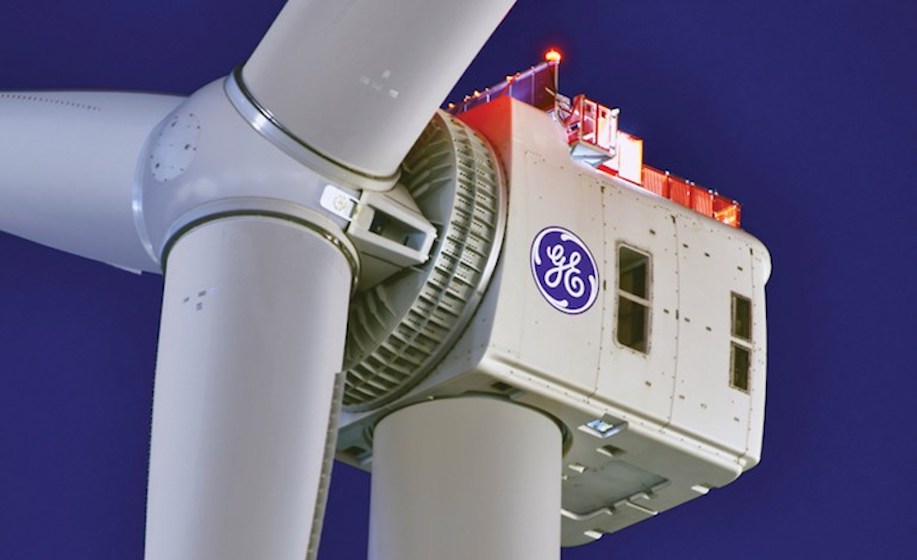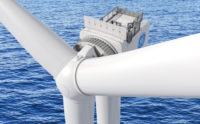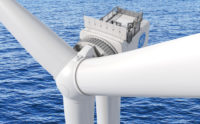GE Renewable Energy, a unit of General Electric, told a federal court on Oct. 18 that it has modified its design of the Haliade-X offshore wind turbine rotor that does not infringe on a patent owned by Siemens Gamesa Renewable Energy, its German-Spanish manufacturing rival in the U.S. offshore wind energy marketplace.
GE asked the U.S. district court in Boston to modify a permanent injunction, issued Sept. 7, which bars the U.S. firm from selling the 12-MW to 14-MW megaturbine in the American market, except for exemptions granted for the Vineyard Wind 1 project off Massachusetts and the Ocean Wind project off southern New Jersey.
The injunction was issued after a Boston federal jury in June found GE Renewable Energy guilty of patent infringement and ordered it to pay $30,000 per MW in royalties for use of Haliade-X turbines.
Judge William Young permanently enjoined GE through the life of the patent from “making, using, offering for sale, selling, importing or installing in the U.S. both the Haliade-X wind turbines and any wind turbines that are substantially similar to and/or not more than colorably different.”
A modified version of the current Haliade-X and a next generation model are different from the original design that was deemed as infringing on the Siemens Gamesa patent, GE Renewable Energy said.
Judge Young said that nothing in the injunction prohibits GE from designing around the Siemens patent and if that happens, the company can seek ruling modification at any time.
GE plans to make both the Haliade-X-ii, a modification of its current turbine, and the Haliade-X-iii, the next generation design, available to U.S. offshore wind customers.
The company told the court it showed the designs to Siemens Gamesa to determine if it would oppose GE’s application to modify the injunction, but said the European firm has not responded.
At issue is a specific feature of the patented wind turbine rotor hub that has a bearing located in the interior shell. GE has developed two designs that reposition the rotating shaft and the front bearing so that both are outside the interior of the hub’s shallow shell, it said.
“These design elements render the Haliade-X-ii and the Haliade-X-iii design more than colorably different from the adjudicated infringing design,” GE said, noting that the burden is for Siemens Gamesa to prove that the new products are not more than colorably different from the design found to infringe on the patent.
GE also appealed the original decision on the patent infringement to the federal appeals court in Boston on Oct. 7.
Siemens Gamesa on Oct. 19 filed a counterappeal. It now claims that GE must pay treble damages for the exempted Ocean Wind project because the firm “will perform further acts of infringement never considered at trial, namely, importing, making, and using the Haliade-X wind turbines in the United States.” Because the acts are “willful,” the European firm said in its filing, the court should award it “exemplary damages” of $90,000 per MW.





